This is a complete guide on State Select Electric Water Heater Troubleshooting.
Here, what I am going to break down in this article:
- Common problems of the State Select Electric Water Heater
- How to flush and drain electric water heater
- How to replace the heating element on the State Select Water Heater?
Without further ado, let’s dive in.
Table of Contents
- State Select Electric Water Heater Troubleshooting [Ultimate Guide]
- How To Flush & Drain State Select Electric Water Heater?
- State Select Water Heater Heating Element Replacement
- End-Note
State Select Electric Water Heater Troubleshooting [Ultimate Guide]
This chapter will take you through the common problems of your electric hot water and provide their solutions as well.
1. Limp Mode
On Limp Mode, your electric water heater will continue to operate with one failed heating method.
For example, if the Control Assembly detects the lower element has failed, the lower element will cancel the call for heat.
Instead of the lower heating element, the upper heating element will call for heat to let the unit heat the water as needed.
The opposite can also be applied the same. In simple words, if the upper heating element is at fault, the lower heating element will call for heat.
How To Fix:
Your water heater will operate in Limp Mode until you correct the failure.
If the Control Assembly determines the lower element is at fault, replace the lower heating element to fix this issue.
Otherwise, you should replace the upper heating element if the Control Assembly detects the failure of the upper element.
2. State Select Electric Water Heater Not Heating
The water heater won’t heat or produce no hot water due to the following reasons:
- No power to the unit
- Unit in vacation mode
- ECO or reset button gets tripped
- Hot water usage pattern exceeds the capability of the water heater in current mode
- Upper temperature sensor is at fault
How To Fix:
No power will flow to your water heater if there is a problem with the home’s electrical wiring or circuit breakers.
Now, you can ask- how can I determine the problem with home wiring or circuit breaker?
It’s simple.
Just get a non-contact circuit tester and follow the guidelines below:
- Find the water heater’s circuit breaker and flip it to the Off position.
- Remove the electrical junction box cover. You can find the junction box on the side of the water heater.
- Identify the two power wires. They are usually black/black or black/red in color.
- Turn on the circuit breaker of the water heater and check the power on both incoming power wires using a non-contact circuit tester.
- Turn the power off at the circuit breaker and replace the cover on the electrical junction box.
If you are getting no power at the water heater, I bet the home’s wiring or circuit breaker is at fault. In this case, call a certified electrician to check your home’s wiring.
Secondly, your State Select Electric Water Heater won’t produce hot water if the unit is in the vacation mode.
To deactivate the vacation mode, press the Vacation Mode button to return to the previous operating mode. Alternatively, you can press the button for any other desired mode.
Thirdly, inspect the ECO (energy cut-off) switch or the reset button to see whether it gets tripped or not. In order to do this, unscrew the upper access panel using a flat head screwdriver.
Then, remove the insulation to access the round reset button. Press the button and you will hear a click, which indicates the reset button is reset successfully.
Fourthly, install another water heater if the water usage exceeds the capability of the unit.
Fifthly, check the temperature sensor or the upper heating element electrically. In order to do this, follow the step-by-step procedure below:
- Shut the power off to the unit at the circuit breaker.
- Take the upper access panel off.
- Remove the insulation to access the ECO button and the upper heating element.
- Detach the two power wires from the upper heating element.
- Now, check the resistance of the upper heating element using a multimeter. Just place leads between the two screw terminals on the element.
A healthy or functional heating element will have a resistance ranging between 5 and 25 Ohms.
If the resistance goes out of specifications, you must replace the upper heating element. I will take you through the step-by-step procedure below to get the element replaced. So, keep scrolling.
3. Slow Hot Water Recovery
If your water heater produces lukewarm or not enough hot water, the following culprits are to blame:
- Defective thermostatic mixing valve or you set the valve too low
- Temperature setpoint is too low
- Water connections to the unit are reversed
- Lower heating element is not functioning properly
- Dirty air filter
- Leak in the plumbing system
How To Fix:
If the hot water is not warm enough, ensure the faucet you are checking doesn’t have a faulty thermostatic mixing valve.
You will never get hot water though there is plenty of hot water in the tank if the thermostatic mixing valve goes bad.
That’s why I highly recommend you to check the water temperature at several faucets to make sure the problem is not in a faucet.
2ndly, you won’t get enough hot water out of the unit if you set the temperature too low.
To raise the temperature, just keep pressing the Up button until you reach your desired temperature setting. After that, press the Enter button to finalize the temperature setting you select.
3rdly, check the water connections for reversed connections and reinstall those connections correctly if needed.
Fourthly, take a look at the lower heating element and measure its resistance. If the resistance goes out of range, replace the lower element.
Apart from these, no hot water will be produced if the air filter of the unit gets dirty. To clean the air filter, follow the steps below:
- Turn the power off to the unit at the circuit breaker.
- Slide the tab on the air filter and remove it from the top facing air intake duct adapter.
- Now, take a vacuum cleaner with a hose attachment to vacuum away dirt or debris from the air filter.
- Once you clean the air filter, slide the air filter into the air intake duct adaptor.
- Restore the power to the unit at the circuit breaker.
And last not the least, check the plumbing system for a leak and repair it.
4. Water Temperature Too High
If the water heater heats water excessively, one of the following reasons are responsible for this issue:
- Set the temperature too high.
- A shortened heating element
- A non-functioning thermostat
How To Fix:
To begin with, ensure you don’t set the temperature to a high setting. If yes, just reduce the temperature by pressing the Down button at the Control Assembly.
For a shortened heating element, you don’t have any option- except replacing the heating element.
In the ‘State Select Water Heater Heating Element Replacement’ section, I mentioned the procedure of replacing the heating element. So, continue to scroll.
In rare cases, the water heater will heat the water excessively if the thermostat gets defective. To replace the thermostat, what you need to do is:
- Turn the power off to the water heater.
- Remove the upper or the lower access panel and take the insulation off.
- Remove the protective plastic cover to access the thermostat
- Disconnect wires from the thermostat.
- Lift up the faulty thermostat and install the new one.
- Reattach the wiring to the thermostat.
- Replace the plastic protective cover, insulation, and upper access panel.
- Restore the power to the unit.
5. Drips From T&P Relief Valve
A drip from Temperature & Pressure Relief Valve indicates:
- Water pressure is too high
- You may pressurize the thermal expansion tank to the wrong pressure
- Dirt and debris get stuck inside the T&P relief valve
- T&P Relief Valve gets broken
How To Fix:
A small amount of water dripping from the Temperature & Pressure Relief Valve represents too high water pressure in your home.
To stop the water drip, I recommend you to install a thermal expansion tank. Turns out, you can install PRV (pressure reducing valve) on the main cold water supply line.
Then, adjust the PRV between 50-60 PSI.
In addition, if you have already installed a thermal expansion tank, ensure you set it to the right pressure. You can take help by following the instructions that came with the Thermal Expansion Tank.
Moreover, debris can stick inside the T&P Relief Valve ( though it’s rare) preventing the valve from seating fully.
Consequently, a small drip will come from the T&P Relief Valve discharge pipe.
You can easily suck away the debris from that valve by operating the T&P Relief Valve manually. In this case, see the label on that valve for instructions.
And lastly, any of these tips fail to resolve the dripping issue, I bet the T&P Relief valve gets broken. Specifically, you need to replace the valve to fix the problem.
6. Water Heater Sounds
You will hear a noise from the unit during the normal operation of the water heater. And it’s normal.
The sounds you heard from the unit are due to normal expansion and contraction of metal parts during periods of heat-up and cool-down.
Besides, the noise coming out of the unit is the operating sound of the heat pump compressor or fan.
Nonetheless, if the heating element gets covered with sediment buildup, it will create varying amounts of noise. In the worst case, it can even cause premature tank failure.
To avoid such an issue, you should flush the water heater tank (I described the flushing procedure in the next chapter of this article).
How To Flush & Drain State Select Electric Water Heater?
Go along with the following flushing procedure to flush & drain the unit like a pro:
- Turn the unit off at the circuit breaker.
- Open a hot water faucet and let it run until it cools down.
- Attach a garden hose to the drain valve and place the other end of the valve to the nearest floor drain or outdoor.
- Set the cold water supply valve to Off.
- Now, open the drain valve on the water heater using a flat head screwdriver.
- To drain the water in the tank faster, turn on a hot water faucet.
- If there was sediment or lime buildup on the bottom of the tank after draining the water, you should flash the tank. Regarding this, open the cold water supply valve and let the water run until no more sediments drain from the tank. After that, close the drain valve.
- Refill the water tank opening the cold water supply valve.
- Restore the power to the unit. It will take up to two hours for the unit to heat the tank water.
State Select Water Heater Heating Element Replacement
A corroded or non-functioning heating element causes the unit to not produce hot water.
To resolve this issue, you must replace the heating element to get hot water out of your water heater.
Before bringing you to the step-by-step procedure, ensure you have these pieces of equipment at your fingertips.
- Get the right replacement part by referring to the water heater’s data plate for the correct wattage and voltage.
- Some regular sockets (1 to ½ inch).
- A garden hose
- Hand dishwashing soap to lubricate the gasket
- A clean cloth
- A flat blade and Phillips screwdriver
Once you have these kits, follow the below replacement procedure:
1. Turn off the unit at the circuit breaker.
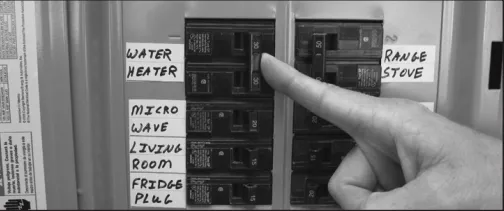
2. Open the electrical junction box. You can locate this box on the side of the hot water heater. Now, use the non-contact circuit tester to verify there is no power at the unit.
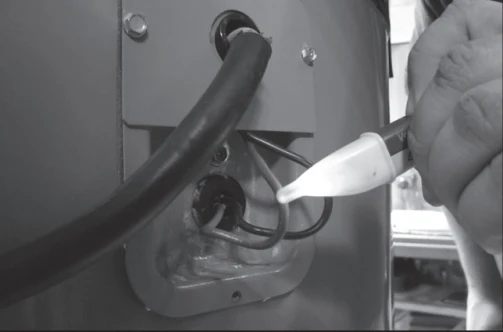
3. Turn on a hot water faucet and let the water run until it cools down.
4. Connect a garden hose to the drain valve at the bottom of the unit and place the other end of the hose to the nearest floor drain or outside. Don’t forget to close the cold water supply valve. Then, open the drain valve using a flat head screwdriver and let the water drain.
5. Remove either the upper or the lower access panel, depending on the heating element you need to replace. Next, fold back the insulation and take the plastic protective cover off.
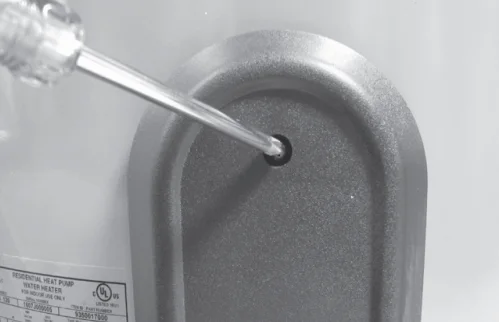
6. Once you drain the tank completely, disconnect the wires from the heating element you intend to replace.
7. Now, remove the defective heating element using an element wrench.
8. Use the cloth to clean the threads in the tank opening. Then, install a new heating element equipped with a rubber gasket. Don’t forget to apply the hand dishwashing liquid to lubricate the gasket.
9. Lastly, tighten up the heating element using an element wrench.
End-Note
Throughout this troubleshooting guide, I mentioned all the problems you may often encounter with the State Select Electric Water Heater.
Just follow the troubleshooting tips I described and resolve the issue to get hot water out of the unit on the ice-cold days of winter.
Turns out, I explained how to flush & drain the unit.
However, If I missed any issue you are facing currently, let me know by leaving a comment below. I will try my best to help you.
Happy Plumbing!
Read Also:
- State Select Gas (Tank) Water Heater Troubleshooting
- State Select (Tankless) Water Heater Troubleshooting

Eric Alvarez is the head of content on LilDutchUncle.Com. He is an HVAC guy based in El Paso, Texas, United States. He obtained his Bachelor of Science degree from the University Of Texas at El Paso. Years of experience in the HVAC field have taught him many lessons, not the least of which is that the value of quality and knowledge far exceeds any promised initial savings. He has a good standing reputation for superior skills in heating, air conditioning, hot water tanks, and indoor air quality systems.
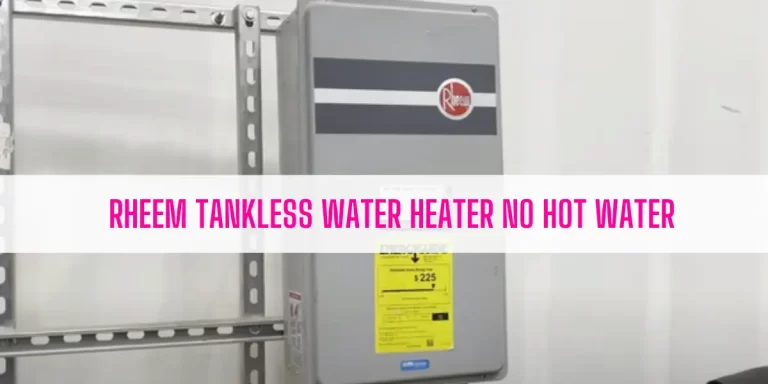
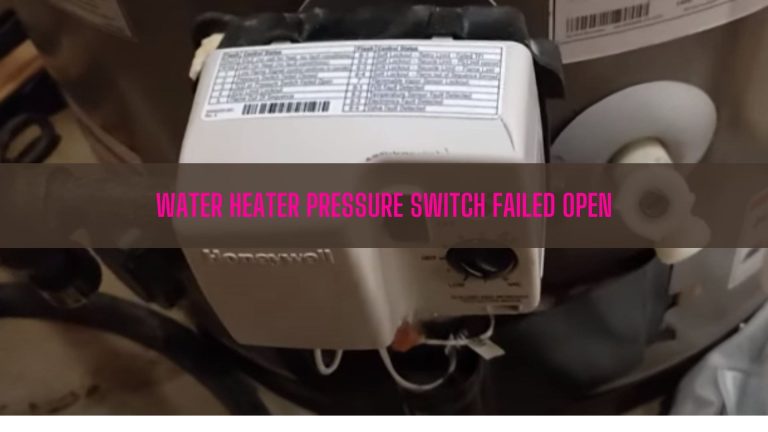

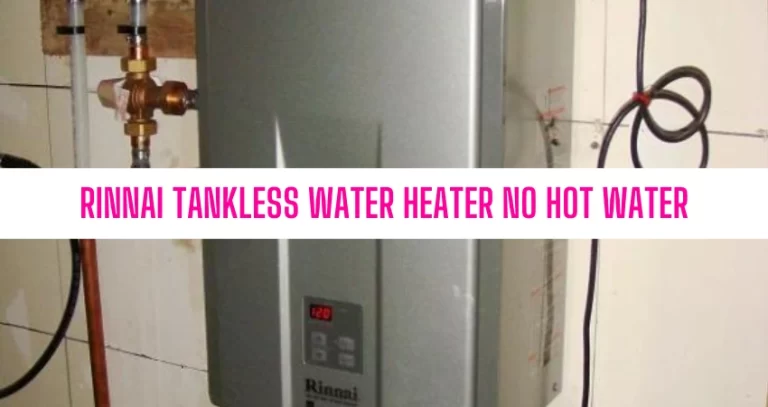

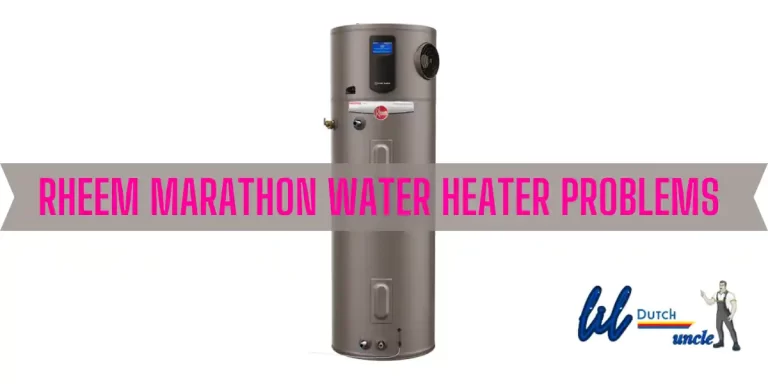
I have a Navien 240A tankless water heater. Every winter and ONLY in the winter time (Mississippi) it will scream real loud for about 1 minute when the gas comes on. Running water though it without the fire on, it’s quite. Water filters are clean. The only gas (propane) coming into the house is for the water heater. The first 2 years nothing went wrong. Then about the 3 winter it went to screaming. Did a flush when it started screaming and everything looked clean. There has never been the first code come up on the readout. What could be wrong only in the cool weather?
Hey Michael Smith,
I think the noise you heard comes from the recirculation pump. It can also make a noise due to expansion. In this case, you can install an expansion tank to quiet the noise. However, I recommend you to call the Navien Tech Support at 1-800-519-8794 for further assistance.
Thank you,
Eric